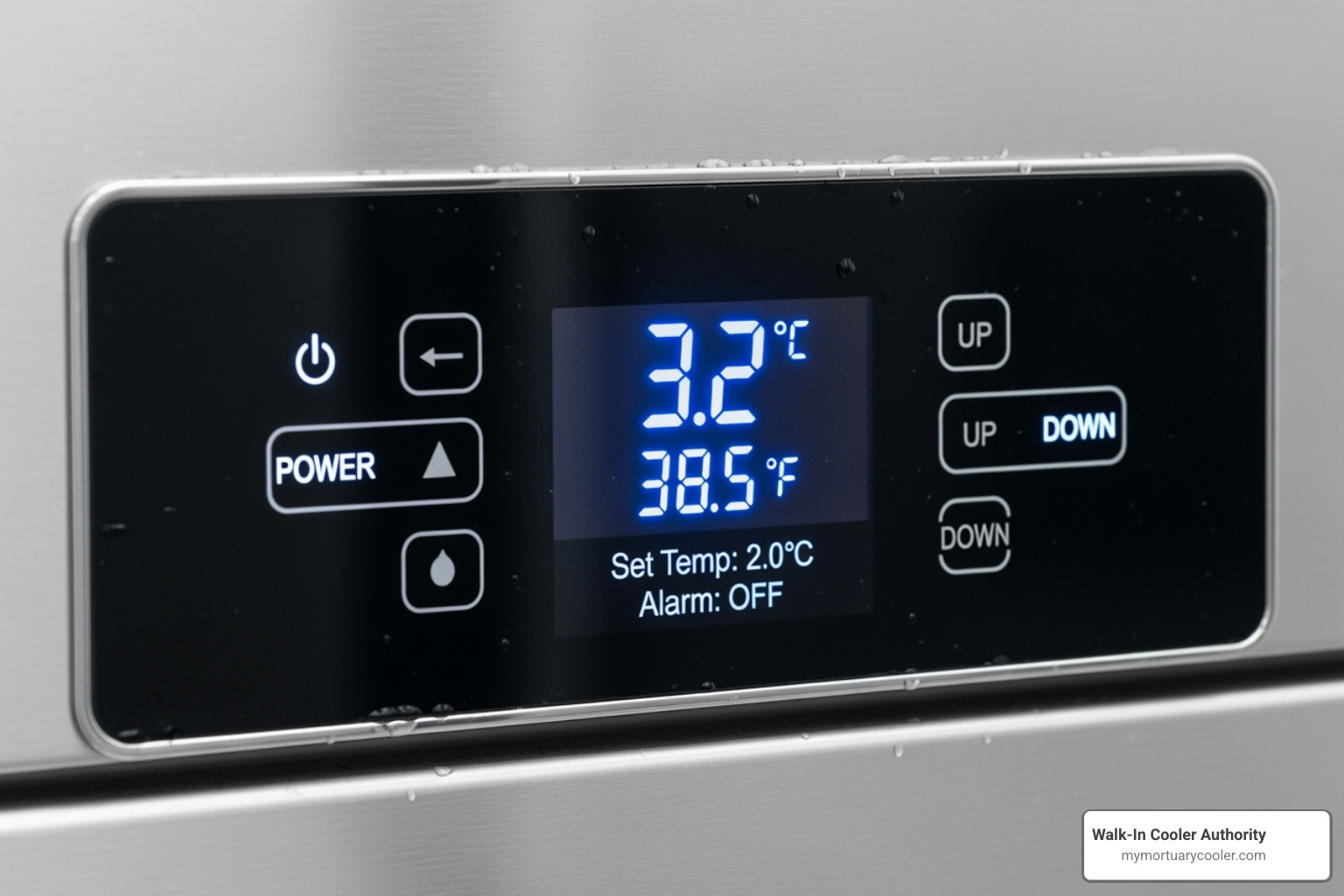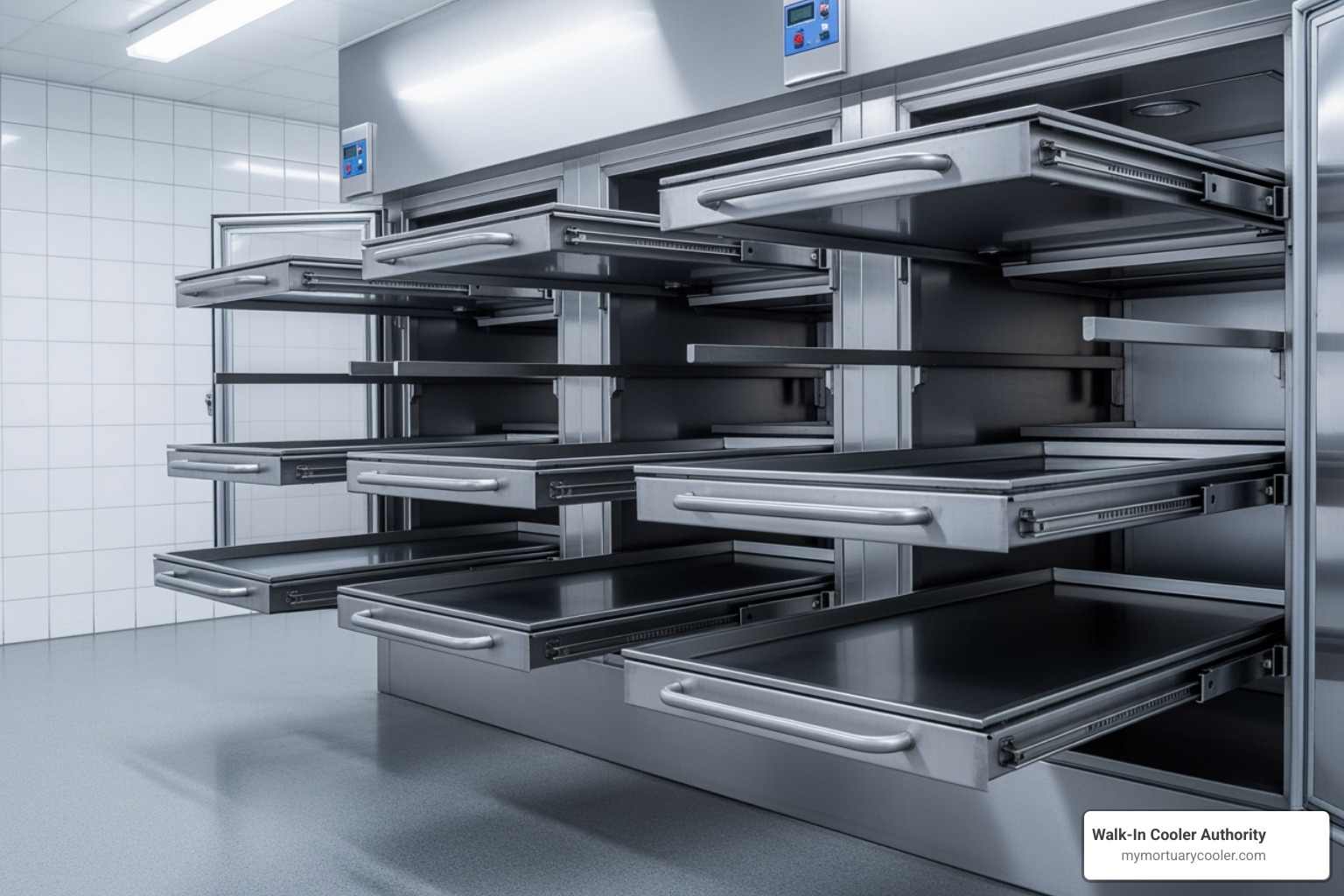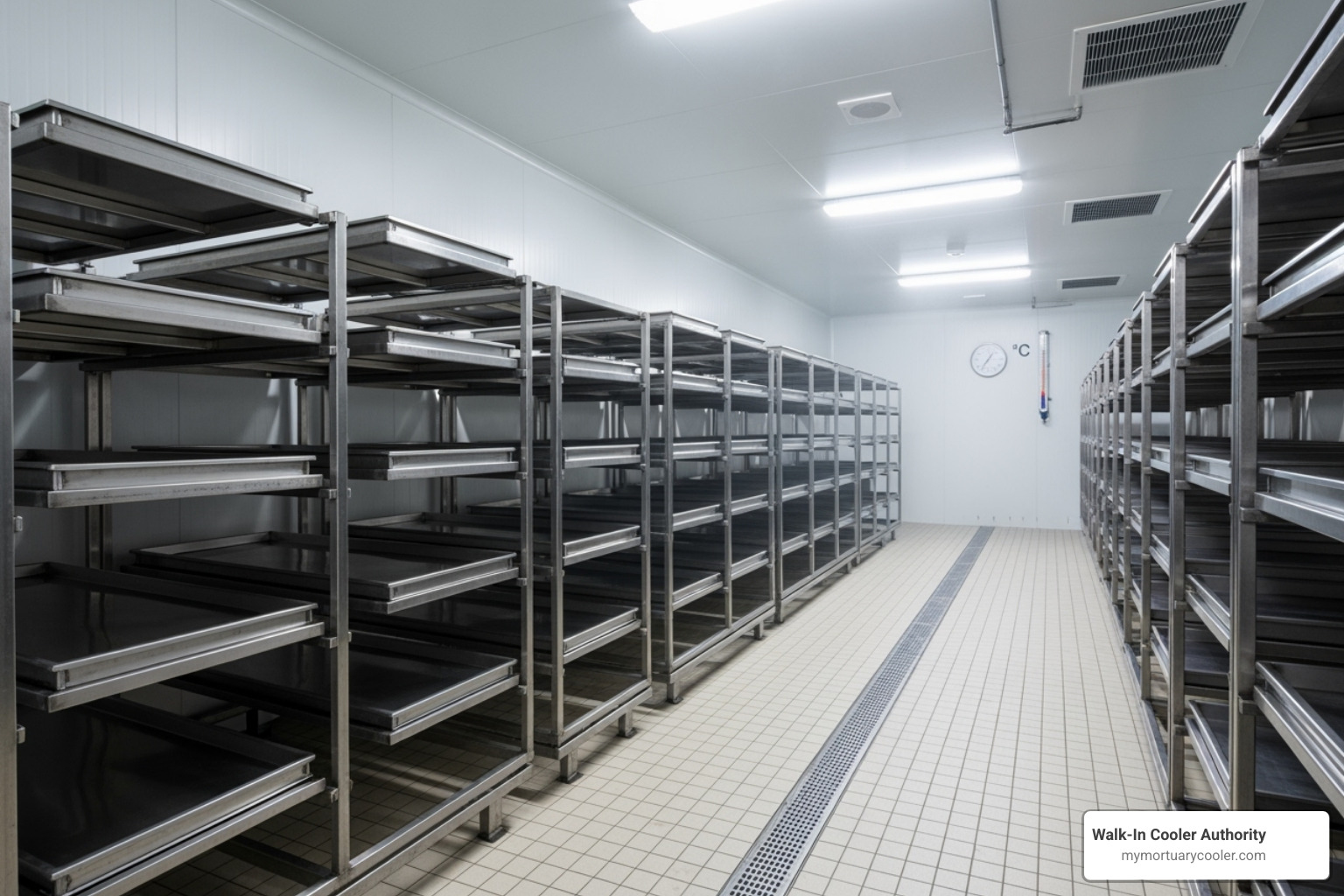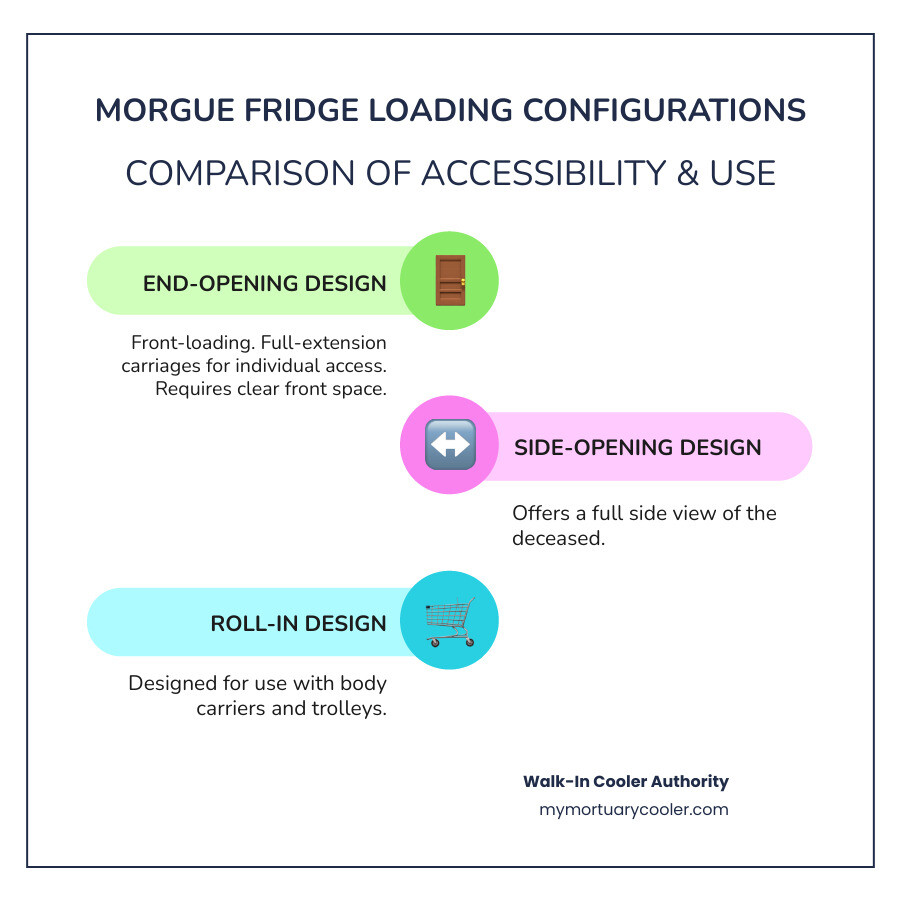The Critical Role of Morgue Fridges in Modern Facilities
When it comes to the respectful handling of deceased individuals, morgue fridges are indispensable. These specialized refrigeration units are crucial for preserving bodies, ensuring dignity, and providing necessary time for identification, autopsies, or final arrangements.
Here's a quick look at their core function:
- Purpose: To preserve deceased individuals and delay natural decomposition.
- Temperature: Typically maintained between 2 °C (36 °F) and 4 °C (39 °F).
- Construction: Often made from stainless steel for hygiene, durability, and easy cleaning.
- Key Locations: Essential equipment in hospitals, funeral homes, and forensic institutions.
- Benefits: Allows time for investigations, family goodbyes, and adherence to legal and cultural procedures.
In the sensitive environments of mortuaries, hospitals, and forensic labs, reliable and compliant refrigeration is not just a convenience—it's a necessity. It ensures that bodies are kept in a stable, hygienic condition. This preservation gives families peace of mind and allows professionals to carry out their duties with precision and respect.
Understanding the options available and the technology behind them is key for any facility needing these critical units.

The Science of Preservation: Temperature and Control
The primary purpose of morgue fridges is to slow the natural process of decomposition, which begins immediately after death. This preservation is achieved through precise temperature control, providing the necessary time for identification, autopsies, and funeral arrangements.

Decomposition is driven by internal enzymes and external microorganisms. The cool, controlled environment inside a morgue fridge is the most effective tool for slowing these processes. There are two main temperature ranges used:
Positive Temperature Range (2°C to 4°C / 36°F to 39°F): This is the standard for most mortuary storage. It significantly slows decomposition without freezing tissue, allowing for temporary storage for several days or weeks. This provides time for family visitations and funeral planning while maintaining the deceased's dignity.
Negative Temperature Range (-10°C to -20°C): Used for long-term preservation, particularly in forensic science. Freezing the body almost completely halts decomposition, which is critical for preserving evidence for detailed examination.
Modern morgue fridges are sophisticated systems featuring digital LED control panels for precise temperature management and high/low temperature alarms with audio and visual alerts. These features ensure the temperature remains within the safe range, protecting the integrity of the deceased.
Why Temperature Ranges are Critical
Precise temperature control is vital for several reasons. Cooler temperatures slow cellular breakdown and microbial growth, which helps maintain the body's structural and tissue integrity. This is crucial for identification, autopsies, and viewings. The slowed decomposition provides invaluable time for law enforcement in identification cases and for families to make funeral arrangements without pressure. In forensic investigations, freezing temperatures are essential for preserving trace evidence and tissue characteristics for analysis. Managing temperature in morgue fridges is a cornerstone of respectful post-mortem care, balancing scientific necessity with human dignity.
An Overview of Morgue Fridges and Common Designs
Morgue fridges are available in several designs to meet the unique space, capacity, and workflow needs of different facilities. The main types are body box refrigerators and walk-in coolers, each with distinct loading configurations.
Body Box / Reach-In Refrigerators

Also known as "body boxes" or "reach-in" units, these are self-contained refrigerators designed for facilities with limited space or lower capacity needs. Their key features include:
- Compact Footprint: They offer efficient storage without requiring a large room.
- Self-Contained Units: The refrigeration system is built-in, simplifying installation and allowing for easier relocation.
- Capacity Options: Body boxes typically hold 1 to 9 bodies, with some high-density models holding up to 23 bodies.
- Tiered Options: To maximize vertical space, they are available in 2-tier, 3-tier, and 4-tier configurations.
These units are reliable workhorses for daily operations, fitting into existing spaces without major renovations.
Walk-In Mortuary Coolers

For facilities with high-volume needs or plans for future growth, walk-in mortuary coolers are the ideal solution. These are custom-built, refrigerated rooms designed for maximum storage.
- High Capacity: Walk-in coolers can be built to hold anywhere from 4-5 bodies to 100+ individuals, making them perfect for large hospitals and forensic centers.
- Modular Panel Construction: They are built from prefabricated, insulated panels that lock together. This allows for custom sizing to fit any available space perfectly.
- Flexibility: The modular design enables ease of assembly, expansion, and relocation, allowing the cooler to adapt to a facility's changing needs.
Comparing Loading Configurations
How bodies are loaded and retrieved is a critical workflow consideration. Morgue fridges offer different loading designs to suit various operational requirements.

- End-Opening Design: The most common configuration, where bodies are loaded from the front on full-extension carriages. This allows individual access and a full view. It requires clear space in front of the unit.
- Side-Opening Design: A specialized option where bodies are loaded from the side. This is advantageous in narrow rooms where front access is limited. It provides a full side view of the cadaver, useful in some forensic settings.
- Roll-In Design: Designed for efficiency, this configuration allows a mortuary trolley or body carrier to be rolled directly into the unit. It is ideal for high-volume facilities and minimizes manual handling.
Choosing the right unit and loading configuration optimizes workflow and ensures staff can handle the deceased safely and respectfully.
Key Specifications and Features to Consider
Beyond capacity, the quality of a morgue fridge is determined by its construction, safety features, and technology. These elements ensure reliability, compliance, and ease of use.
Materials, Construction, and Hygiene
The materials used in a morgue fridge are fundamental to its longevity and hygienic performance.
- Stainless Steel Construction: Type 304 stainless steel is the industry standard due to its durability, corrosion resistance, and non-porous surface, which makes it easy to sanitize.
- Antimicrobial Finishes: Optional coatings on panels can actively inhibit bacterial growth, providing an extra layer of hygiene.
- High-Density Insulation: Foamed-in-place polyurethane insulation (typically 4 inches thick) ensures temperature stability and energy efficiency. Quality units use environmentally friendly, CFC-free insulation.
- Corrosion-Resistant Components: All parts, including racking and handles, must resist corrosion from frequent cleaning with disinfectants.
- NSF Certification: Look for NSF Certified components to ensure materials meet strict public health and safety standards.
Essential Safety and Compliance Standards for morgue fridges
Safety and regulatory compliance are non-negotiable. Key features include:
- OSHA Compliance: All equipment must meet federal workplace safety standards. Adherence to regulations like the Bloodborne Pathogens standard is critical.
- Interior Safety Release: A mandatory feature for walk-in units, allowing anyone inside to open the door to prevent accidental entrapment.
- Vapor-Proof Lighting: Sealed light fixtures provide safe illumination and prevent moisture intrusion.
- Heated Door Frames: Prevents condensation and ice buildup, ensuring doors seal properly.
- Magnetic Gaskets: Create a tight door seal to maintain stable temperatures and improve energy efficiency.
- Secure Locking Mechanisms: Control access and ensure the security of the unit.
Technological Advancements in modern morgue fridges
Modern morgue fridges incorporate smart technology for improved monitoring and reliability.
- Remote Temperature Monitoring: 24/7 systems send automated alerts via phone or email if temperatures deviate from the set range, or in case of power failure.
- Integration with Building Management Systems: Allows for centralized monitoring and control of all facility equipment.
- Digital Controllers and Loggers: Provide precise temperature control and create detailed records for compliance and troubleshooting.
- Refrigeration Redundancy: Backup systems are available for critical applications, ensuring continuous cooling if the primary system fails.
Installation, Maintenance, and Essential Accessories
Proper installation, routine maintenance, and the right accessories are essential for the long-term performance and reliability of morgue fridges.
Installation and Space Requirements
Careful planning is required before installing a morgue fridge. Key considerations include:
- Floor Load Capacity: The floor must support the substantial weight of the unit, racking, and its contents. Walk-in floor panels typically handle loads of 600 lbs/sq. ft.
- Ventilation: The refrigeration system's condenser requires adequate airflow to prevent overheating and ensure efficient operation.
- Electrical Requirements: A qualified electrician must verify that the facility's power supply matches the unit's voltage, frequency, and phase requirements.
- Assembly Space: Walk-in coolers require sufficient room for maneuvering and assembling the modular panels. Body boxes need proper placement to avoid workflow bottlenecks.
- Leveling: The unit must be properly leveled to ensure stable operation and a tight door seal.
Routine Maintenance for Optimal Performance
Preventive maintenance ensures continuous, reliable operation and extends the equipment's lifespan.
- Cleaning Protocols: Regularly clean all stainless steel surfaces with non-abrasive cleaners to maintain a sterile environment.
- Door Seal Inspection: Periodically check magnetic gaskets for wear or damage to prevent temperature fluctuations and energy waste.
- Refrigeration Components: Schedule regular servicing of the compressor and evaporator coils by qualified technicians.
- Condenser Cleaning: Keep the condenser coils free of dust and debris to maintain efficiency and prevent system strain.
- Alarm System Tests: Regularly test high/low temperature alarms to ensure they are functioning correctly.
Establishing a planned maintenance schedule is the best way to prevent unexpected equipment failures.
Complementary Products and Accessories
Integrating accessories creates a complete, efficient, and safe mortuary system.
- Body Storage Racks: Maximize space and organize storage within walk-in coolers.
- Telescoping Tray Systems: Allow smooth, individual access to bodies without disturbing others.
- Body Lifts: Ensure safe and dignified handling of all cases, especially bariatric, while protecting staff from injury.
- Mortuary Trolleys: Provide smooth transport within the facility, essential for roll-in fridge models.
- Body Trays and Autopsy Tables: Stainless steel trays and nearby autopsy tables create an efficient workflow.
- Cadaver Bags: Provide secure and leak-proof containment during transport and storage.
Frequently Asked Questions about Mortuary Refrigeration
Here are answers to some of the most common questions professionals have about morgue fridges.
What is the ideal temperature for a morgue fridge and why?
The standard temperature for morgue fridges is 2°C to 4°C (36°F to 39°F). This range is ideal because it effectively slows the natural decomposition process by inhibiting enzymatic activity and microbial growth, but it does not freeze the body. This preserves tissue integrity for identification, autopsy, or viewing. It provides the necessary time for families to make arrangements while maintaining the deceased in a respectful state. For long-term forensic preservation, temperatures of -10°C to -20°C are used to freeze the body and halt decomposition almost completely.
What is the main difference between a walk-in cooler and a body box unit?
The primary differences are capacity, customization, and installation.
- A body box is a self-contained, reach-in refrigerator with a fixed capacity (typically 1-9 bodies). It has a compact footprint, is ideal for smaller spaces, and arrives pre-assembled for simple installation.
- A walk-in cooler is a modular, refrigerated room designed for high-capacity storage (from a few bodies to 100+). It can be custom-sized to fit a specific area and can be expanded or relocated later. It offers maximum storage flexibility for larger facilities.
In short, a body box is a standard appliance, while a walk-in cooler is a custom, scalable storage solution.
Why is stainless steel the preferred material for mortuary refrigerators?
Stainless steel is the industry standard for morgue fridges for three key reasons:
- Durability and Corrosion Resistance: It withstands the rigors of a busy facility and resists rust from moisture and cleaning chemicals, ensuring a long service life.
- Hygiene: Its non-porous surface does not harbor bacteria, absorb fluids, or retain odors, making it the most hygienic option for deceased storage.
- Ease of Sanitization: The smooth surface is easy to clean and disinfect thoroughly, which is critical for preventing pathogen spread and meeting health regulations.
These properties make stainless steel the best investment for reliability, hygiene, and long-term performance in a mortuary environment.
Conclusion
Morgue fridges are more than just refrigeration; they are essential instruments for ensuring dignity, preservation, and respect for the deceased. Choosing the right unit involves understanding temperature control, design options, materials, and safety compliance.
From compact body box units for smaller facilities to customizable walk-in mortuary coolers for high-capacity needs, there is a solution for every requirement. Key features like stainless steel construction, OSHA-compliant safety mechanisms, and remote temperature monitoring ensure that modern units are reliable, hygienic, and secure.
Proper installation, routine maintenance, and the use of complementary accessories like body lifts and storage racks are crucial for creating a safe and efficient workflow. This equipment is a fundamental investment in your facility's ability to provide compassionate and professional care.
At Walk-In Cooler Authority, we understand that your work demands equipment you can trust. As America's trusted authority in the mortuary and funeral supplies industry, we take that responsibility seriously. Our OSHA-compliant mortuary refrigeration is designed to meet the highest standards, helping you save on essential equipment without compromising on quality.
For a deeper dive into cadaver refrigeration, explore our comprehensive guide: A complete overview of cadaver refrigeration for hospitals & funeral homes.
Your work is vital to the community. Choose equipment that honors that responsibility with unwavering reliability and respect.
















